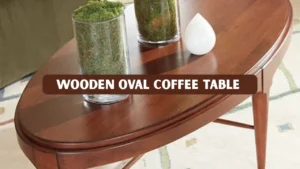A garden arbor is more than just a decorative feature. Learning how to build a garden arbor allows you to create a welcoming entryway to your garden, provides support for climbing plants, and acts as a charming focal point that enhances any outdoor space. For DIY enthusiasts, an arbor is a project that combines creativity with practical skills. Its presence can instantly elevate the look and feel of your garden.
This guide offers detailed instructions, material recommendations, design ideas, and real-world case studies. It also provides maintenance tips to ensure your arbor remains durable and visually appealing. By following these steps, you can create a structure that is both functional and beautiful. The result is an elegant addition that brings life and character to your outdoor space.
Key Takeaways
- A garden arbor enhances garden beauty and provides support for climbing plants.
- Careful planning, quality materials, and precise assembly ensure a durable structure.
- DIY arbors can be customized to fit your style, showing how to build a garden arbor.
- Regular maintenance and plant care keep your arbor a charming feature for years.
- Case studies highlight successful DIY arbor projects in real-world gardens.
Planning Your Garden Arbor
Before grabbing a saw or hammer, planning is the first step to a successful build.
Choose the Right Location
- Ensure level ground with good drainage to prevent wood rot. This will provide a stable foundation and help your arbor last for many years.
- Consider sun exposure if you plan to grow climbing plants. Choosing the right location ensures healthy growth and vibrant blooms throughout the season.
- Ensure there’s enough space for both the arbor and foot traffic. This allows people to comfortably walk through and enjoy the structure without obstruction.
Decide on Design and Size
- Flat-top vs. arched: Arched tops add elegance; flat tops are easier to build. Choose a style that complements your garden theme and fits your woodworking skill level.
- Dimensions: Standard width is 3–4 feet; height 7–8 feet. Customize according to your garden. Adjusting the size can also help accommodate larger plants or provide more clearance for taller visitors.
- Additional features: Add lattice sides, benches, or gates to enhance usability. These elements not only improve functionality but also add charm and visual interest to your garden arbor.
Gather Plans
- Download or sketch DIY arbor plans. Having a clear plan helps you visualize the final structure and reduces mistakes during construction.
- Prepare a cut list for materials and hardware. This ensures you purchase the correct quantities and sizes, saving time and preventing material waste.
Selecting Materials for Your Arbor
Choosing durable and weather-resistant materials ensures your arbor lasts for years.
Wood Options
- Cedar: Naturally rot-resistant, ideal for outdoor projects. Its durability and pleasant aroma make it a popular choice for long-lasting garden structures.
- Pressure-treated lumber: Affordable and resistant to insects and decay. It is widely available and provides a cost-effective solution for DIY builders.
- Redwood: Premium option with natural beauty and longevity. Its rich color and fine grain add elegance while ensuring the arbor withstands outdoor conditions for years.
Hardware
- Outdoor-rated screws and brackets for structural stability. Using corrosion-resistant hardware ensures your arbor remains sturdy and safe even in harsh weather.
- Concrete for anchoring posts securely. Properly set posts prevent shifting and provide a solid foundation for the entire structure.
Tools You’ll Need
- Saw (circular or miter) for making precise cuts in lumber to fit your arbor design accurately.
- Drill with bits to create pilot holes and securely fasten screws without splitting the wood.
- Level to ensure vertical posts and horizontal beams are perfectly aligned for stability.
- Post-hole digger for digging deep, uniform holes that anchor your arbor firmly in the ground.
- Jigsaw (for decorative curves) to cut arches or intricate patterns, adding a custom look to your arbor.
- Measuring tape and pencil to mark accurate dimensions and ensure all cuts and placements are precise.
Step by Step Guide: How to Build a Garden Arbor
Building your own arbor can be fun and rewarding. Follow these steps for a solid and attractive structure.
Digging Post Holes
- Depth: 24–36 inches for stability. Deeper holes help the arbor withstand wind and prevent leaning over time.
- Diameter: Slightly larger than post width. This allows space for concrete and ensures a snug, secure fit for the posts.
- Use concrete to anchor posts and prevent shifting. Properly set posts with concrete create a durable foundation that supports the entire structure safely.
Assemble Side Frames
- Attach horizontal supports to vertical posts. These supports provide stability and help maintain the shape of the arbor.
- Ensure frames are square using a carpenter’s square. A perfectly square frame prevents uneven gaps and ensures the arbor is structurally sound.
- Pre-drill holes to prevent wood splitting. This step protects the wood and makes it easier to insert screws without cracking the posts.
Attach Crossbeams and Top
- Secure top beams with brackets or screws. This ensures the top structure is stable and can support additional weight from climbing plants.
- For arched tops, cut curved pieces using a jigsaw. Carefully cutting curves adds an elegant design element while maintaining structural integrity.
- Double-check level and alignment. Verifying that everything is level ensures the arbor looks professional and functions safely.
Add Lattice or Decorative Panels
- Attach lattice sides to support climbing plants. Properly secured lattice provides a strong framework for vines and flowers to grow evenly.
- Consider decorative cutouts or patterns to enhance visual appeal. Adding unique designs can make your arbor a standout feature in your garden.
Case Studies
- Sarah, a DIY enthusiast in California, built a cedar arched arbor in her backyard using recycled wood. Within six months, climbing roses covered the lattice sides, creating a picturesque entrance for guests. Her project is a perfect example of how to build a garden arbor that combines sustainability and aesthetic appeal.
- A family in Texas installed a pressure-treated lumber arbor with integrated benches. The structure became the focal point of their garden, doubling as a shaded seating area and a support for jasmine vines. Their DIY approach highlights the versatility and functionality of well-planned garden arbors.
Finishing Your Garden Arbor
A good finish protects your arbor from the elements and enhances its appearance.
- Sand rough edges and surfaces for smoothness. This prevents splinters and prepares the wood for a clean finish.
- Apply outdoor stain, sealant, or paint. A protective coating shields the wood from weather damage and extends the life of your arbor.
- Optional: Add decorative trims or accents. Trims and accents give a polished look and can highlight the architectural style of your arbor.
Planting and Decorating Tips
Once the structure is ready, it’s time to bring it to life with plants and decorations while following tips on how to build a garden arbor that complements your chosen plants and enhances the overall garden aesthetic.
Choosing Climbing Plants
- Roses, clematis, honeysuckle, or grapevines. Choose plants that thrive in your local climate and complement the style of your garden arbor.
- Train plants to grow along lattice panels. Using ties or soft garden string helps guide the plants while preventing damage to stems and leaves.
- Ensure proper spacing for airflow and sunlight. Adequate spacing promotes healthy growth, reduces disease risk, and allows the arbor to look full and vibrant.
Decorative Enhancements
- String lights or lanterns for evening ambiance. Lighting adds a magical atmosphere and highlights the arbor as a focal point after dark.
- Benches or flower boxes for added charm. These additions increase functionality while enhancing the visual appeal of the garden space around the arbor.
Maintenance Tips
Keeping your arbor in top shape requires periodic care.
- Inspect and tighten hardware annually. Regular checks prevent loosening or wobbling, ensuring your arbor remains safe and stable.
- Re-stain or seal wood every 2–3 years. This protects the wood from moisture, sun damage, and prolongs the life of your arbor.
- Prune climbing plants to prevent overgrowth and maintain structural integrity. Trimming encourages healthy growth and prevents plants from weighing down or damaging the structure.
Conclusion
Building a garden arbor is a rewarding DIY project that blends creativity, craftsmanship, and gardening. By carefully choosing the right location and selecting durable materials, you can ensure your arbor stands the test of time. Following step-by-step assembly instructions makes the process straightforward and enjoyable. With attention to detail, your DIY project can enhance the beauty and functionality of your outdoor space.
Learning how to build a garden arbor allows you to create a personalized structure that reflects your style. Adding climbing plants or decorative lattice can turn it into a stunning focal point. Regular maintenance, such as staining and pruning, will keep your arbor looking fresh and inviting. Ultimately, a well-built arbor becomes a charming centerpiece that elevates any garden for years to come.
FAQs
What is the best wood for outdoor arbors?
Cedar and redwood are top choices due to natural rot resistance. Pressure-treated lumber is also suitable for budget-friendly projects.
Can I build a garden arbor on uneven ground?
Yes, but ensure posts are anchored properly and level the ground where possible to prevent instability.
How long does it take to build a DIY garden arbor?
Depending on complexity, it can take 1–3 days for a simple arbor. More decorative arbors may require additional time.
Do I need a permit to build a garden arbor?
Check local building codes. Most arbors under a certain height (usually 8 feet) do not require permits.
How do I prevent my arbor from rotting?
Use rot-resistant wood, seal or stain regularly, and ensure proper drainage around the base.




